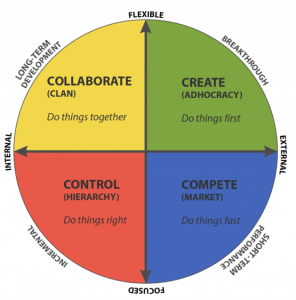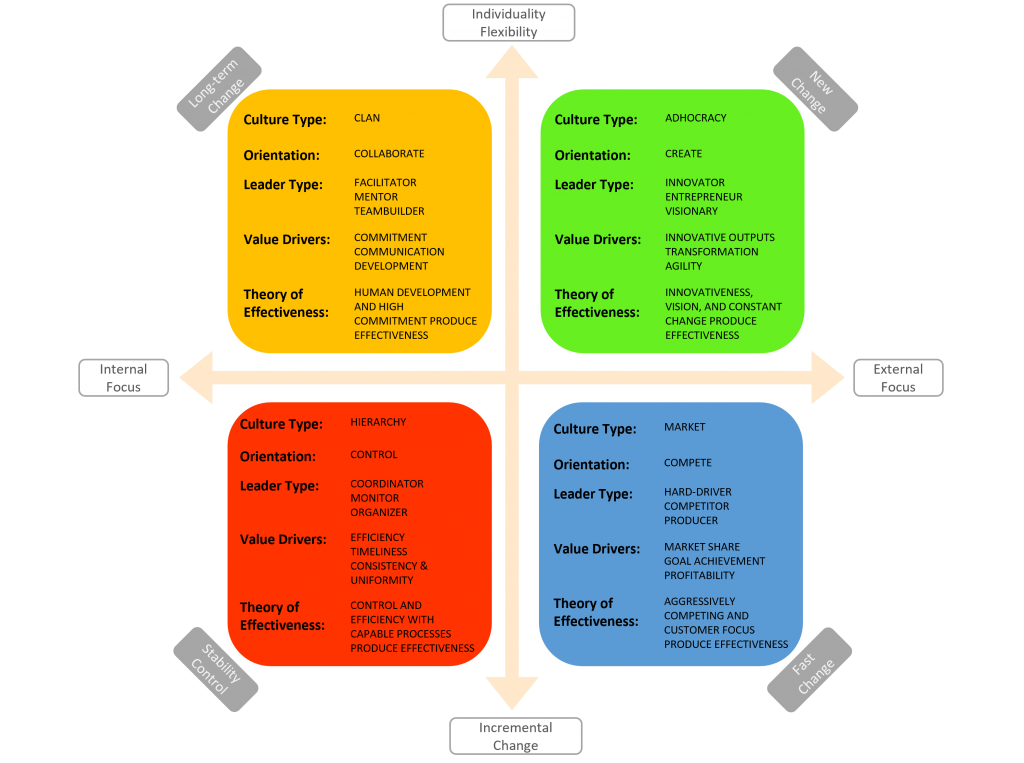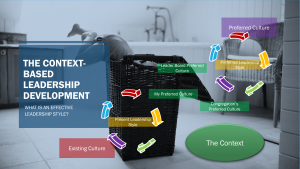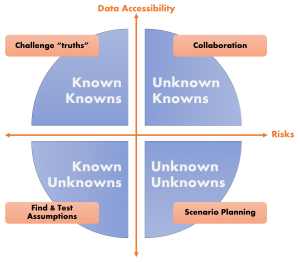I have discussed in my previous post how to create a direction for your congregational cultural transformation. Your church’s current dominant culture and level of dominance would set the starting orientation toward the preferred future culture revealed from the culture assessment. The direction will surely change the course when you cultivate and strengthen your dominant culture through Internal Ministry Marketing (“IMM”) and expansion to include other cultural elements through Radical Programming for Ministry (“RPM”) projects. However, the initial direction allows you to start the cultural change management with less resistance from your congregation.
The OCAI categorized an organizational culture into four types: 1. Clan; 2. Adhocracy; 3. Market; Hierarchy. Your dominant culture represents the social fabric of your congregation. It helps us understand why they behave in a particular way and choose to belong to your congregation. Your dominant culture is a blessing and something that must be cultivated for the better at the same time. Otherwise, it can be a misfortune. Some people will feel very comfortable and welcomed, but others won’t belong to your church because of it. Knowing your dominant culture allows you to cultivate it to become more inclusively inviting. I discussed in a post that inclusivity, diversity, and cultural competency are a process. I suggested a practical approach to the process. The proposed tactics help facilitate the process systematically.
Your dominant culture tells which competing values are driving your congregation. For example, establishing stability, control, and incremental development are competing values for the Hierarchy culture. Cameron and Quinn (2005) acknowledge a fundamental paradox of leadership is tied to two critical tensions:
The first is the need to foster things like collaboration, harmony, and positive relationships (Yellow) on the one hand and the competing need to drive effort, goal achievement, and results (Blue) on the other.
The second is the urgency with which leaders must establish stability, control, and integration (Red), while at the same time aggressively pursuing innovation, change, and learning (Green).
Depending on the cultural profile of your congregation, you should understand the competing values and exercise your leadership accordingly to proceed with the congregational culture transformation.
I had a chance to assess 25 churches’ cultures with the OCAI surveys in early 2022. The mainline churches showed their dominant culture in Yellow and Red with little Green and Blue. Their preferred future culture is strictly confined to Yellow with even less Red, Green, and Blue. Few pastors showed similar patterns in their culture profiles. Most pastors’ profiles were considerably Greener and Bluer than the congregation.
The remnant has chosen to belong to their congregations since they were comfortable with the existing culture. They continue to develop the culture into their preferred ones further. They have become a tribal congregation over a long period. It will be a blessing for them in the meantime if their pastors can become tribal mothers or fathers and a curse if their local community is thriving in the culture of Green and Blue. These churches will be the last churches to vanish in the middle of the disruption caused by the digital culture since they are well bonded in a family-like culture. Still, the new people could find a hard time being accepted as family members before they decide to leave.
What about their pastors with the culture of Green and Blue in those congregations? They will experience some resistance from their congregation when they try to exercise their leadership in the native leadership style. What’s wrong? Nothing wrong with being authentic, right? Right and wrong. As a living system, the congregations will consider it a threat or an attack if the pastors exercise their leadership with different value drivers and orientations. Mostly, it is nothing to do with what they are trying to achieve. A congregation is like a self-rotating mobile in an infant crib. Any input, good or bad, could disrupt the movement in a status quo, especially when they come toward the top of it. Any input, which pastors and key leaders inject, will trigger a wave from top to bottom. The wave gains energy while traveling down, causing more turbulence than at the top. It tries to overcome the disruption by resisting the change when that happens. If it fails, the mobile will stop rotating and requires full-blown new energy to initiate its rotation again. Too much loss and so much new investment needed. Most churches today can not afford this anymore.
will trigger a wave from top to bottom. The wave gains energy while traveling down, causing more turbulence than at the top. It tries to overcome the disruption by resisting the change when that happens. If it fails, the mobile will stop rotating and requires full-blown new energy to initiate its rotation again. Too much loss and so much new investment needed. Most churches today can not afford this anymore. 
Pastors ought to learn to play their leadership within the competing value framework under the paradoxical tensions on top of their native leadership styles. As you develop the congregational culture, you will be amazed how the culture reshapes your leadership style. They are closely interrelated.  Driving alignment for the change is crucial to what kinds of congregations and leaders to be.
Driving alignment for the change is crucial to what kinds of congregations and leaders to be.
What will be next? We need to proceed to build vitality for any new changes. I call it context-based systematic leadership development. I will discuss in the next post how to motivate the congregation to be fully engaged in advancing toward the direction of systematic leadership. We are going to use a strategy called Internal Ministry Marketing.





